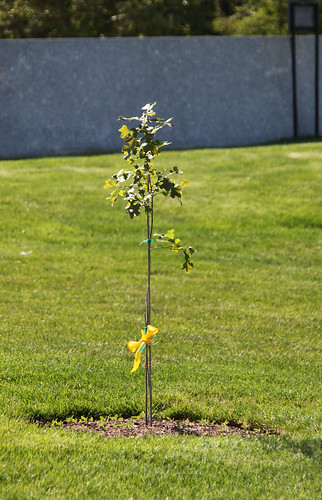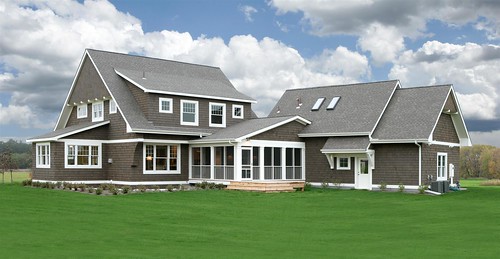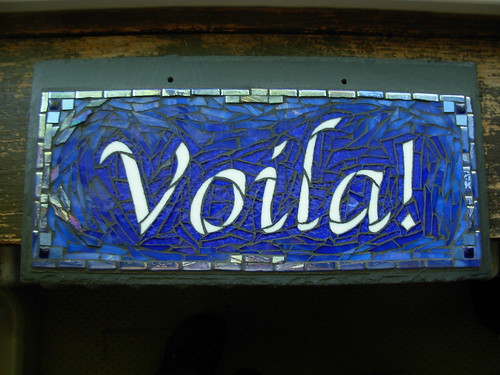Arlington Oak sapling - official replacement tree - Arlington National Cemetery - 2012-05-19
Image by dctim1
The new "Arlington Oak" at the grave of President John F. Kennedy at Arlington National Cemetery in Arlington County, Virginia, in the United States.
John F. Kennedy was assassinated in Dallas, Texas, on Friday, November 22, 1963. Initial press reports indicated that President Kennedy would be buried at Holyhood Cemetery in Brookline, Massachusetts, where his son Patrick Bouvier Kennedy (who had died on August 9, 1963, two days after his premature birth) was buried. But the site for the President's grave was quickly changed to the hillside just below Arlington House. The site was chosen because the President and his friend, architect John Carl Warnecke, happened to visit the site in March 1963 and the President had admired the peaceful atmosphere of the location. The initial suggestion to bury President Kennedy at Arlington appears to have been made by Secretary of Defense Robert McNamara. First Lady Jacqueline Kennedy agreed to the change. Although Kennedy's sisters and many of his long-time associates from Massachusetts were opposed to burial at Arlington, Attorney General Robert F. Kennedy visited the site with McNamara on Saturday, November 23, and concluded that Mrs. Kennedy's wishes should be honored.
On Sunday, November 24, 1963, Jacqueline Kennedy requested an eternal flame for her husband's grave. The original site of Kennedy's grave was set in a plot of grass roughly 5 yards (4.6 m) on each side about halfway up the hill on which Arlington House stands.
The President's funeral was held on Monday, November 25. On the evening of November 26, the grave was surrounded by a white picket fence. The fencing covered an expanded area 30 feet (9.1 m) long by 20 feet (6.1 m) wide. The enlarged site was due to the wish of Mrs. Kennedy to inter her two deceased children next to their father. (In addition to Patrick Bouvier Kennedy, Mrs. Kennedy had given birth to an unnamed stillborn daughter in 1956.) Mrs. Kennedy's mother, Janet Auchincloss, oversaw the disinterment of the daughter in Newport, Rhode Island, while Cardinal Richard Cushing (a long-time friend of the family) supervised the disinterment of Patrick Kennedy in Massachusetts. The two children were buried next to their father on December 5, 1963. A small white cross was placed at the head of the daughter's grave, and a small white headstone placed at the head of Patrick Kennedy's grave.
Warnecke, Mrs. Kennedy, and Robert F. Kennedy visited Arlington on Wednesday, November 28, 1963, to discuss themes and plans for a permanent memorial. The following day, Warnecke was chosen by Mrs. Kennedy to design the president's tomb. The U.S. government formally set aside a 3 acres (1.2 ha) site surrounding the President's grave on December 5, 1963.
The final design was unveiled publicly at the National Gallery of Art in Washington, D.C., on November 13, 1964. A large oval granite walkway led to the site. The walkway's huge size partly helped to lessen the grade the public had to climb to reach the grave, and partly helped to accommodate the huge lines of people anticipated.
Warnecke envisioned a small elliptical plaza (120 feet (37 m) long and 50 feet (15 m) wide) made of marble set at the top of and inside the oval. The northeastern side of the elliptical plaza would be enclosed by a low wall inscribed with quotes from Kennedy's speeches. Marble steps led up from the plaza to a rectangular terrace 66 feet (20 m) long and 42 feet (13 m) wide. Centered in the terrace is a rectangular plot of grass 30 feet (9.1 m) long and 18 feet (5.5 m) wide, raised slightly above the ground level, which would accommodate the graves. Flat black slate grave markers (3 feet (0.91 m) by 4.53 feet (1.38 m)) marked each grave, listing the name and date of birth and death in raised lettering. The headstones would be set flush with the earth.
The plan was for work to begin in the fall of 1965 and be completed by the fall of 1966. The design required that the bodies of President Kennedy and his children be moved downhill about 20 feet (6.1 m). A 150-year-old oak tree, which was off-center in the circular pathway, was retained. The Kennedy family offered to pay for cost of teh grave site, but the U.S. government refused and asked them to pay only the 0,000-0,000 cost of the grave itself. Most of the cost was attributed to the need to reinforce and strengthen the site to accommodate the weight of large crowds.
Aberthaw Construction built the grave site, Ammann & Whitney provided structural engineering services. The white marble for the plaza, terrace, and steps came from Proctor, Vermont, and the granite for the approaches came from Deer Isle, Maine.
In the fall of 1966 the decision was made to replace the grassy terrace with rough-hewn reddish-gold granite fieldstone set in a flagstone pattern. The fieldstones used had been taken more than 150 years ago from a quarry on Cape Cod near where President Kennedy used to spend his summers. The bronze brazier shape for the eternal flame was also replaced. Instead, a 5 feet (1.5 m) wide beige circular fieldstone (found on Cape Cod in 1965) was set nearly flush with the earth and used as a bracket for the flame.
Mrs. Kennedy, with assistance of Kennedy speechwriter Ted Sorenson, selected the inscriptions for the wall by November 1965, all of which came from Kennedy's inaugural address (although some were shortened for artistic reasons). John E. Benson inscribed the quotations onto the seven granite blocks.
The permanent John F. Kennedy grave site opened with little announcement or fanfare on March 15, 1967. The reburial of the bodies occurred on the evening of March 14, after Arlington National Cemetery had closed. The transfer was witnessed by newly elected Senator Robert F. Kennedy, Senator Edward M. Kennedy and Cardinal Richard Cushing of Boston. Consecration of the new burial site occurred at 7:00 AM on March 15, 1967, in a driving rain. The ceremony, which took 20 minutes, was attended by President Lyndon B. Johnson, Mrs. Kennedy, and members of the Kennedy family. Cardinal Cushing presided over the consecration. The final cost of the entire project was .2 million.
The "Arlington Oak" which stood off-center within the Kennedy memorial gravesite area was uprooted and killed on August 27, 2011, during Hurricane Irene. The gravesite was closed to the public for two days to remove the tree and stump, but reopened on August 30.
On Arbor Day (April 27) 2012, a sapling grown from an acorn of the Arlington Oak was planted at the same site. Two other Arlington Oak saplings were planted nearby, while a fourth was planted in Section 26 near the Old Amphitheater and a fifth in Section 36 near Custis Walk.
You can tell the "new Arlington Oak" because it was tied with a yellow ribbon.
living room
Image by brenner_ron
Interior view of home designed by Ron Brenner Architects in Stillwater, MN. Brenner specializes in home designs that are under 3000 SF of space. Our goal is to provide meaningful and functional design for the average american family. You can obtain more information by visiting www.ronbrennerarchitects.com
Part of a collection of
Simple and Unique House Plans
by simply elegant home designs. You can see more information or purchase this plan at www.simplyeleganthomedesigns.com/
This image is the exclusive intellectual property of Ron Brenner Architects, LLC. It is intended for personal use only and may not be reproduced or distributed.
exterior
Image by brenner_ron
Exterior view of home designed by Ron Brenner Architects in Stillwater, MN. Brenner specializes in home designs that are under 3000 SF of space. Our goal is to provide meaningful and functional design for the average american family. You can obtain more information by visiting www.ronbrennerarchitects.com
Part of a collection of
Simple and Unique House Plans
by simply elegant home designs. You can see more information or purchase this plan at www.simplyeleganthomedesigns.com/
This image is the exclusive intellectual property of Ron Brenner Architects, LLC. It is intended for personal use only and may not be reproduced or distributed.
Wood shingles close-up
Image by maxim off
Traditional Cape Cod house external design (wooden boarding)
Voila! Mosaic House Sign by Nutmeg Designs
Image by Nutmeg Designs
For a house on Cape Cod named Voila! 16x8" on slate.
No comments:
Post a Comment